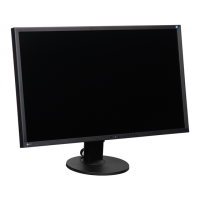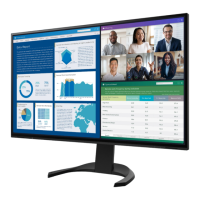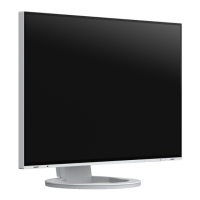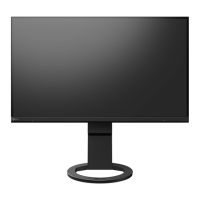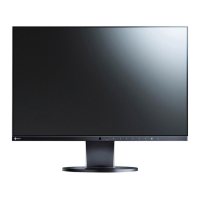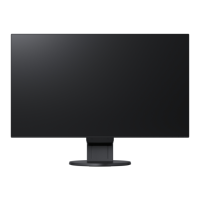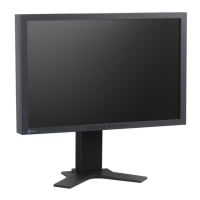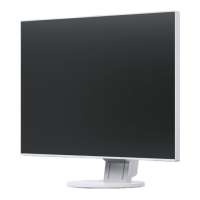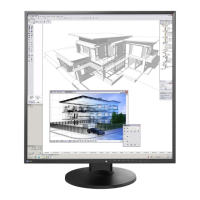6-2. Imaging Problems
Problem Possible cause and remedy
1. The screen is too bright or too
dark.
• Use “Brightness” or “Contrast” in the Setting menu to adjust it (see
“Color Adjustment” (page 18)). (The LCD monitor backlight has
a limited life span. If the screen becomes dark or begins to icker,
contact your local EIZO representative.)
• If the screen is too bright, try changing the Auto EcoView setting
to “On”. The monitor detects the ambient brightness to adjust the
screen brightness automatically (see “Auto EcoView” (page 25)).
2. The brightness changes on its
own.
• Try changing the Auto EcoView setting to “O” (see “Auto EcoView”
(page 25)).
3. Text is blurred. • Check whether the PC is congured to meet the resolution and
vertical scan frequency requirements of the monitor (see “1-3.
Supported Resolutions” (page 10)).
• Try setting the magnication of display on the OS to “100%”. When
using multiple monitors, try setting the magnication of display to
“100%” on all monitors.
4. Afterimages appear. • Afterimages are particular to LCD monitors. Avoid displaying the
same image for a long time.
• Use the screen saver or power saving function to avoid displaying
the same image for extended periods of time. Depending on the
image, an afterimage may appear even if it was displayed for a short
period of time. To remove such a phenomenon, change the image
or keep the power turned o for several hours.
5. Green / red / blue / white / dark
dots remain on the screen.
• This is due to LCD panel characteristics and not a malfunction.
6. Interference patterns or pressure
marks remain on the LCD panel.
• Leave the monitor with a white or black screen. The symptom may
disappear.
7. Noise appears on the screen. • In the Setting menu, set “Overdrive” to “O” (see “Overdrive” (page
20)).
• When inputting HDCP system signals, normal images may not be
displayed immediately.
• When inputting an HDMI signal, try changing “Signal Format” in the
“Administrator Settings” menu (see “Signal Format” (page 35)).
8. The positions of windows and
icons are shifted when the
monitor is turned o / on or when
restored from power saving
mode.
• Turn the setting “On” for “Compatibility Mode” on the “Administrator
Settings” menu (see “Compatibility Mode” (page 34)).
9. The color shown on the screen is
not correct.
• Try changing “Input Color Format” in the Setting menu (see “Input
Color Format” (page 22)).
10. Images are not displayed over the
entire area of the screen.
• Try changing “Picture Expansion” in the Setting menu (see “Picture
Expansion” (page 21)).
• Try changing “Signal Format” in the “Administrator Settings” menu
(see “Signal Format” (page 35)).
• Check whether the setting for the resolution of the PC matches the
resolution of the monitor.
38
Chapter 6 Troubleshooting
